A follow up question to my previous on building a DIY water gauge DIY water tank gauge using analogue ammeter.
I have scrabbled together a "Euro type" sender (10 Ω empty - 180 Ω full) and repaired the ammeter (which I need to keep). It has a resistance of 10 Ω and a full scale deflection at 6 mA (odd, I think, but it appears to have been adapted before).
Using the help gained from my previous question I have designed this circuit:
simulate this circuit – Schematic created using CircuitLab
It has (as I understand all Wheatstone Bridges will) a non-linear response.
My question: what simple strategies can I employ to make the response as linear as possible?
Edit: To add a graph of the sender's resistance vs tank level. These are actual measurements taken on the bench.
Edit: And an additional graph showing (I think) the discrepancy between actual level and the gaugeAmps.
